An isolated facility covered in snow; a paranoid character tampering with broadcasting devices thereby severing any contact with the outside world; the bludgeoning of a door with an axe; gallons of blood flowing from a sealed compartment…. If any of these remind you of a certain horror classic from the 1980’s, then you are correct. It is Stanley Kubrick’s The Shining (1980)?
Hang on, this is John Carpenter’s The Thing (1982) instead? It appears we have two revered horror classics vying for the throne of their decade! There can be only one king on this hill. Indulge me as I attempt to decide which is the definitive ‘80s frightener. I will be comparing both films by exploring what I believe makes great horror, and ultimately demonstrate why Kubrick and Carpenter are masters of the genre!
Atmosphere and Setting
The one non-negotiable element crucial to a horror picture is “location location location!” We need a confined 3-D space oozing with dread, whether it’s a haunted mansion, vessel or suburban home. The audience will not feel trapped if the film is some globe-trotting adventure. Atmosphere is the feeling tied to the isolated environment our characters are trapped in. The movie’s atmosphere is built to stretch the experience of its terror.
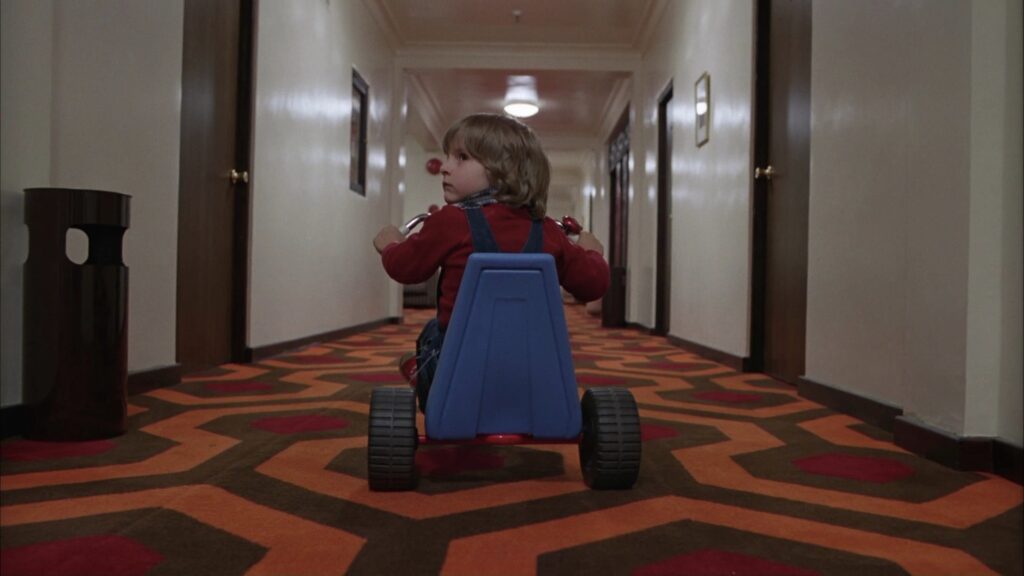
With The Shining, The Overlook Hotel is almost a main character. As the shelter for the Torrance family, it ought to be a pleasant, happy, loving, salubrious place for a family to be. But the building, lying to both the characters and to the audience. You’re on edge even when nothing particularly disturbing is happening. If you map out the hotel, there are inconsistencies that make no sense.
There is a scene where the characters walk in and out of a freezer and come out in a different section of the hallway. There’s architecture in the hotel that cannot possibly exist in any real way. Your brain subconsciously recognizes this and it throws you off. It’s hard to tell how much is intentionally meant to be confusing in a subtle way to the audience, but this is Stanley Kubrick we’re talking about here.
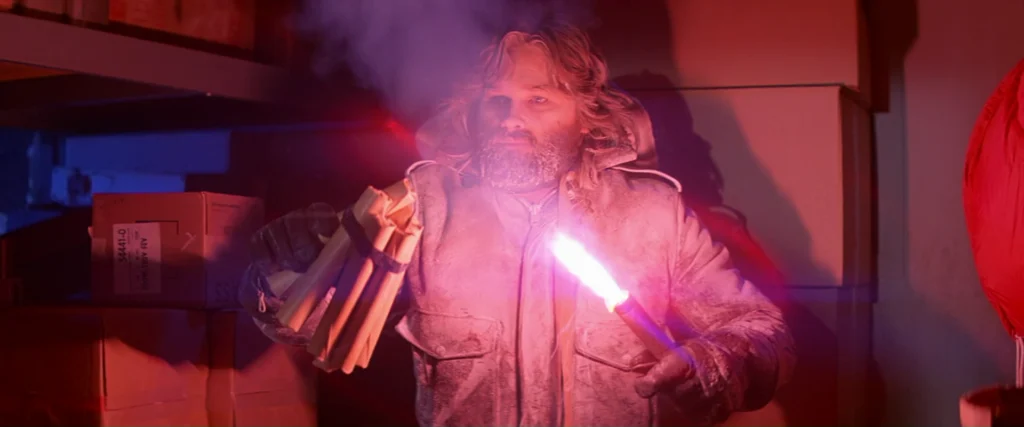
The Thing is set in an Arctic research station (filmed in Alaska), away from modern civilization. The long silent shots of the corridors in the station with the wind howling outside tell you everything you need to know about the situation and the isolation. It makes you feel like you are there. You watch The Thing on a hot summer day, yet you feel cold and isolated. It really has a tangibly different feel to it than monster films or anything conventionally seen in horror. It has a wonderfully unsettling combination of isolation, the altered self, fear of The Other.
Both films nail this criterion, but I shall award this round to The Shining for having perhaps the most iconic hotel and maze in cinema history, with well-defined geography and confinement that lets viewers know where everyone is at a given time.
Imagery
With cinema being a visual medium, a horror movie must utilize every frame to show the audience something so terrifying that they cower in retreat or take their eyes off the screen. The horror must be vivid, descriptive and palpable in order to be effective.
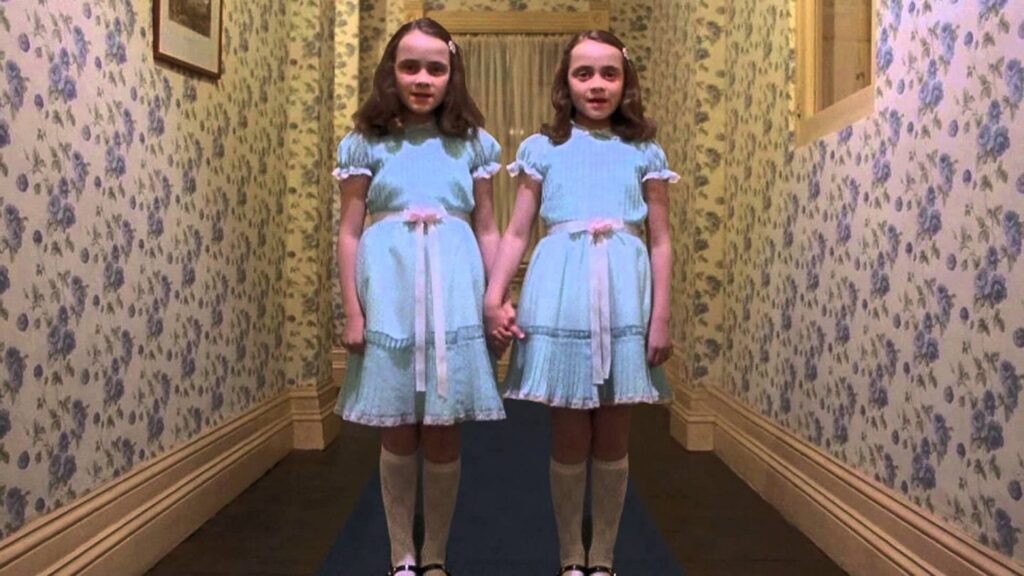
The fellating bear suit man, the bloody butler, the bloody twin sisters, the blood elevator, and many other macabre visuals from The Shining have seared their way into pop culture, to the point of parody. The denizens of the Overlook Hotel are like tendrils of an otherworldly beast. These dark horrible things embody unsettling repressed truths that threaten to undo the family.
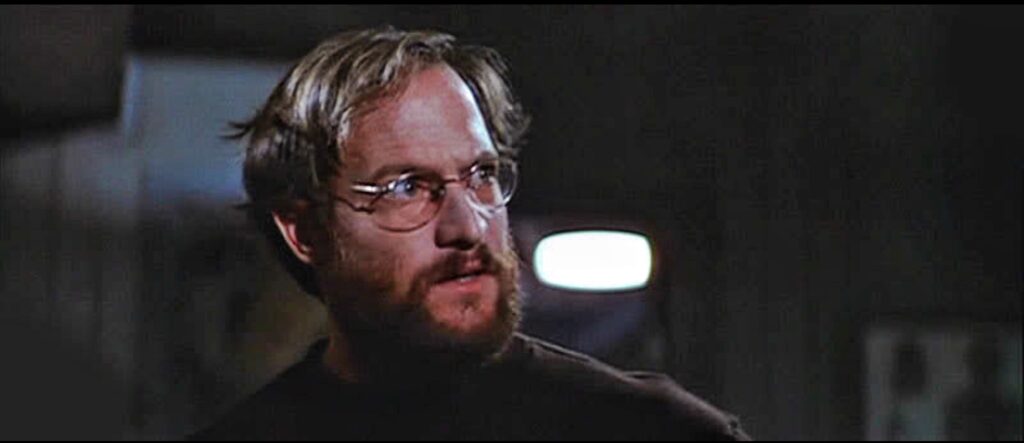
Two words when it comes to imagery in The Thing: Rob Bottin! A special effects legend responsible for a good portion of Hollywood’s grotesque imagery. Any scene with the titular thing assimilating another living organism is pure nightmare fuel. The defibrillator scene where Norris’s chest cavity opens with gnarly teeth to bite Copper’s arms is an all-timer jumpscare. The Norris-faced creature melting and scuttling away is unforgettable. The appearance of everything in the movie is so perfect in instilling terror and distrust, enduring for over 4 decades.
Both films have memorable iconography, but The Thing takes this round for having truly disgusting, Lovecraftian imagery conceived by the finest craftsmen operating at peak capacity.
Soundtrack and Sound Design
Sound is the tangible connection to the atmosphere and setting and overall visuals of the picture. An effective horror movie immerses you into its world. You may shut your eyes at the sight of something horrific, but you cannot shut your ears from skin-crawling sound design and score.
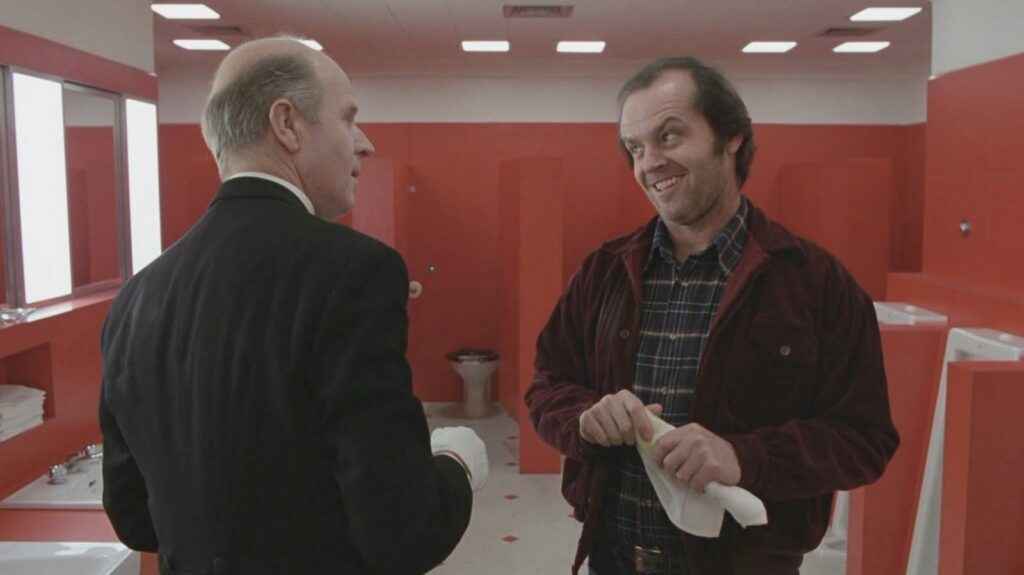
With music comes emotion and Kubrick wants emotion in every second of his films. The opening music playing in The Shining is Dies Irae (a tune that represents death). Composer Wendy Carlos oscillates from gentle to discordant to disorienting; a sonic illustration of the Overlook’s corruptive influence twisting the Torrance family. The soundtrack is so eerie, malevolent and just “wrong” that it crawls under the skin. It builds up the whole ambience of the Overlook, transporting the audience through the hallways.
The theme for The Thing sounds like something mimicking a human heartbeat but not getting it quite right. Ennio Morricone opens with a big, powerful beat – the heartbeat of the Thing itself. The “dum-dum dum-dum” drowns out all other noise. Then the triple beat of a frightened human heart cuts in;
Then the slow, creepy chords of the organ, signifying the Thing assimilating its victims’ organs. Then -the second heartbeat copies the first with every other beat……and disappears until the Thing’s heart is the only one beating. Simple, stripped-down piece of music storytelling. As if the soundtrack wasn’t ominous enough, the ghastly wails whenever the Thing is in pain stays with you for all the wrong reasons!
The Thing narrowly wins this round for having sonically identifiable elements so wondrously baked into the story, without detracting from it.
Antagonists
Whether it’s a full-grown man with a phallic weapon; whether it’s a girl with long hair; whether it’s spirals; whether it’s a cursed apparition; whether it’s an untamed creature, horror lives or dies by its villains. The threat must be embodied in an oppressive foe(s) that puts the characters (and the audience by extension) through a trial by fire.
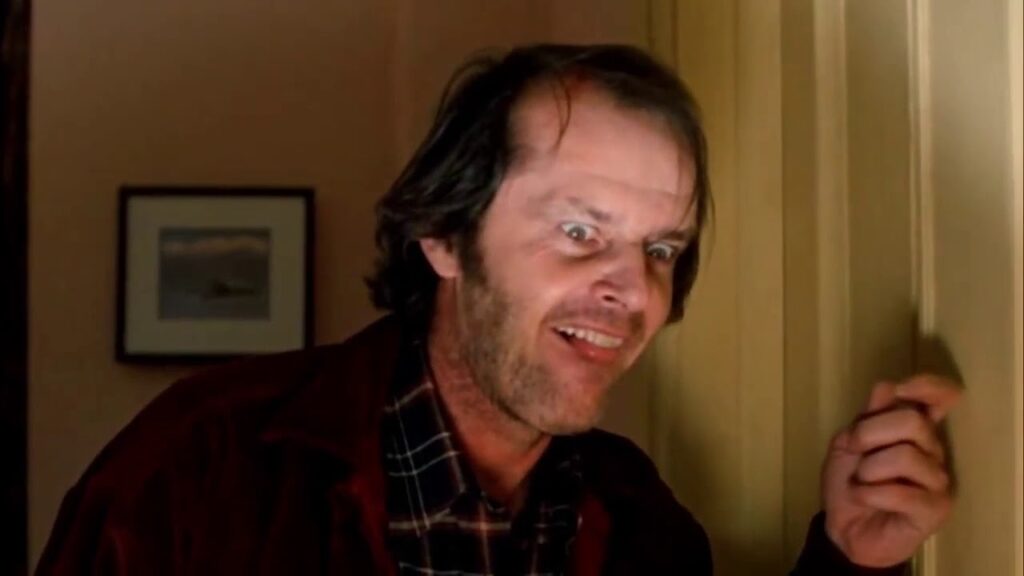
Something that Stephen King and Kubrick understood with The Shining, is that far scarier than an unseen spirit or specter, is an unhinged human. Especially a parent that has power and authority over you. The father is an abusive alcoholic frustrated with his writer’s block, so he turns it into a nightmare for everybody. The hotel is a source of evil and the alcoholic father succumbs to it.
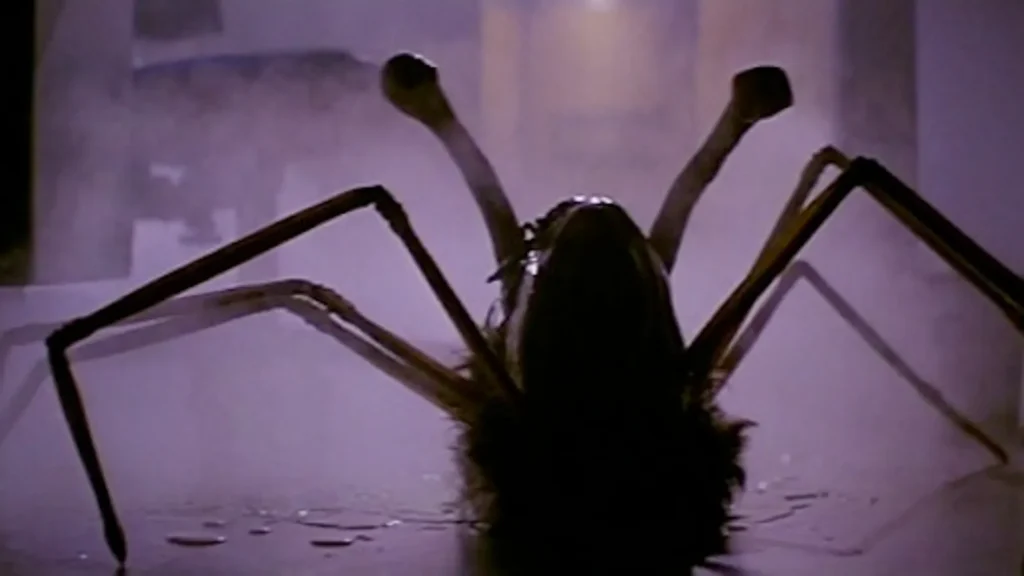
In The Thing, every single part of the alien creature works as a whole. It is a conscious, violent, fearful being that cannot help but assimilate other life forms. It is a shape-shifter that has no other place of escape except our planet. It is able to conceal itself from detection, driving the characters to turn on each other. The Thing is Man vs Self, Man vs Man, and Man vs Nature!
I declare The Thing victorious in this bout, by virtue of having a more formidable antagonist ten steps ahead of the protagonists and the audience.
Subtext and Theme
I find that the horror movies that endure are those that tap into some universal or sociocultural fear held by the public. This is not to say that a horror movie fails if it doesn’t have some message or subtext attached, but horror is a very internal, subconscious genre that cannot be cheaply formulized if you want it to actually be effective. A monster that represents something primal or sociocultural stays with the audience; lingering in the psyche and remaining there for generations. Theme is the difference between a movie that has something to say and a movie that has not much to say.

Ask five people about The Shining and you’ll get 20 interpretations. The themes of alcoholism, cyclical abuse and generational violence are part of the fabric of this film. King wrote a story about overcoming his demons, expressing a dark time in his life as an author and family man. Kubrick was concerned about history repeating itself – his Jack is interchangeable in a long line of violent and abusive men. In true Kubrick fashion, the film means more as you revisit in different stages of your life.

Tapping into the AIDS hysteria of the 1980s, The Thing captures the dread of knowing that you may have to die because it’s unclear whether you’re a threat or not. It manifests the horror of a person transforming into something foreign; the agonizing pain that someone would go through during assimilation.
It is the familiar and comforting becoming something alien and twisted. It is the cosmic horror of our reality taken from us simply by encountering something so far beyond our comprehension that we lose our sanity and humanity in the process. The Thing forces us to realize that we can never know another person. When you can’t trust anyone, a dog can always be trusted – and this movie strips that from you.
It is evident that both movies are thematically rich and tap into collective fears. With that said, The Shining is a more layered onion that has been the subject of conspiracies and conversations, since Kubrick left it open to multiple interpretations.
Suspense and Escalation
The best horror movies are the ones where the films themselves “feel” haunted. I like to feel as if there’s something looming over the film the whole time, suspending the viewer in a constant state of tension. The greatest scares are predicated on subversions of expectations, things or people acting in ways you don’t expect.
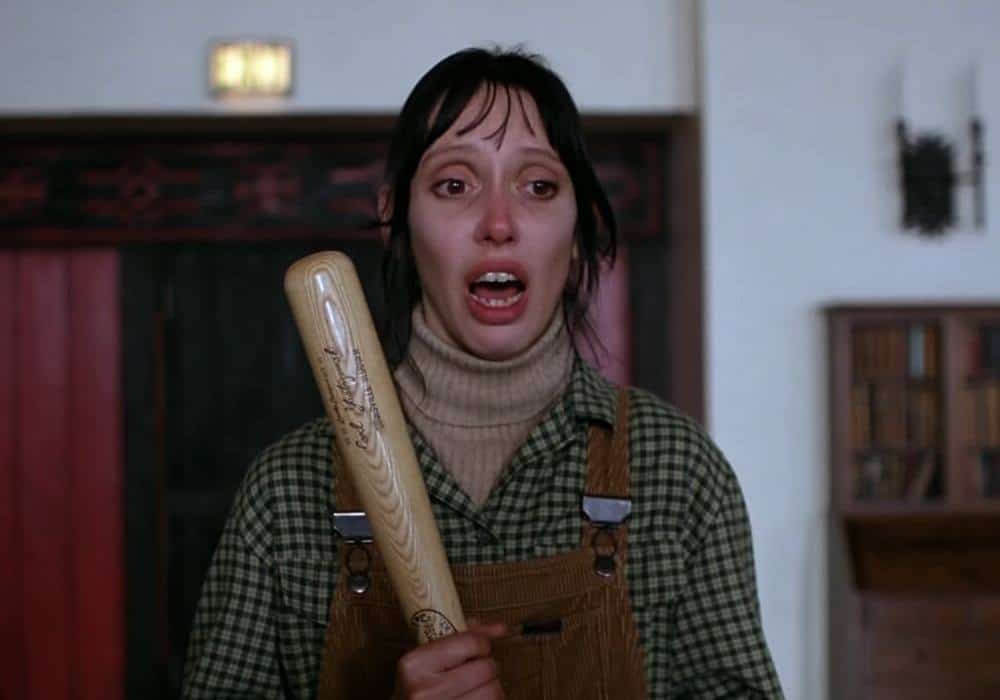
The manner in which Kubrick handles jumpscares remains innovative over 40 years on: he holds his camera on a character’s petrified face – and then immediately cuts to the thing petrifying the character! I love how it primes the audience to dread what comes next every time: we see Jack or Wendy or Danny’s face turn to horror at something – and then we see the horrifying thing for ourselves!
Most directors lack such confidence and would instead choose to have the audience experience the horror at the same time as the characters. Allowing the audience to see the scenes draw out slowly creates an eerie feeling and you get to see the actors play out their physicality as well. Admittedly, Jack axing Dick Halloran (Scatman Crothers) is shot like a traditional jumpscare, but it’s still effective in Kubrick’s hands! The Shining is riddled with continuity errors and the now infamous 180° rule breaking scene in the bathroom, all of which creates the unease of something being off!
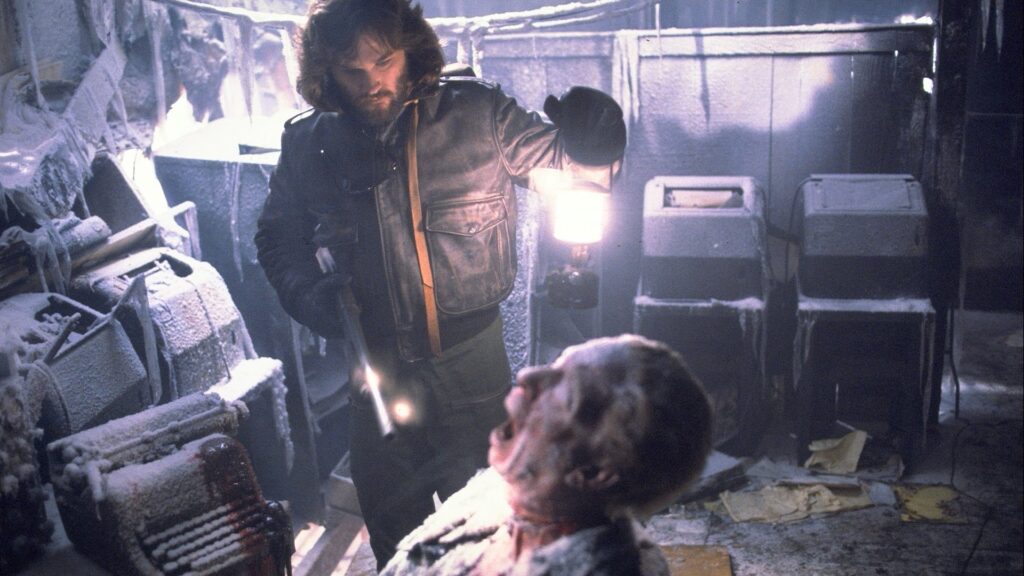
Who sabotaged the blood bank? Whose blood will react to MacReady’s hot needle? Which of the remaining survivors is the Thing? The audience is sat on the edge of their seats, constantly guessing and second guessing where and when the axe will drop in The Thing.
Think of the genres Carpenter has to juggle here: action, science fiction, body horror, whodunit mystery, paranoia thriller! In the words of Quentin Jerome Tarantino, the paranoia and tension bounces from wall to wall until it has nowhere to go except through the fourth wall, leaping out of the screen and grabbing the audience!
I crown The Thing winner of this round, as a masterclass in sustaining and increasing unbearable white-knuckled tension throughout the runtime.
Characters and Archetypes
Horror fans are arguably the most attuned to spot tropes. Whether it’s the “Final Girl” or the “Token Non-White Character First To Die”, the genre constantly runs the risk of retreading eye-rolling cliches. Even the most lauded and critically acclaimed horror pictures have to contend with distracting archetypes that the layman has seen countless times. The sure-fire way to not alienate the audience is if the characters are believable enough or if the established rules and archetypes are deconstructed. Character dynamics, development and drama are essential to feed the splurge of tone, style, aesthetic, and panorama.

The Shining understands that many men value a moment’s thrill over their families. The horror isn’t that Jack Torrance is seduced, tricked or cajoled into slaughtering his family, it’s that he chooses to do it because it’ll be a blast. Jack is awful from scene one; we know he beats up his wife and strikes his son prior to the movie. Being alone seems to stew in him resentment towards women and children; This is not a ruminate on the struggle of addiction because there is no struggle: Jack is offered a drink by the Overlook and he takes it.
He is offered the excuse to kill his family and he takes it. His already sadistic nature combined with the supernatural influence of the Overlook could really tip the scales into him instantly accepting the drink. Wendy is an emotionally neurotic mess, too meek and naive to know how to protect herself and Danny from Jack. Danny’s telekinesis is a byproduct of his dad’s insanity; mirroring how abusive parents breed abusive children but, in this case, invoking the supernatural.

Each actor in The Thing knows his character to the bone. Carpenter insisted on the actors hanging out with each other as they read lines. For 2 weeks, they bonded on set; figuring out dynamics and relationships among themselves. We see Palmer (David Clennon) playing with his headphones; Windows (Thomas Waites) playing with his guitar, and the rest of the crew playing cards.
The audience feels like they could spend time with these characters; the mundanity grounds the story until the horror creeps in. The characters in The Thing are a bunch of working guys with different personalities trying to make sensible decisions in a crazy situation. They use logic, science, tools, flamethrowers and everything they’ve got against an evasive, tactical adversary. They display high levels of competence, but they are simply outwitted and overwhelmed.
Both films do away with cardboard cutout characters and trite moments. I do however find the crew in The Thing to be more believable, engaging and realized.
Empathy
Part of why the French New Wave and Torture Porn movements of the 2000s were so derided, was that they appeared to have been made from a jaundiced perspective. Storytellers are at liberty to allow awful things to happen to their characters, but a horror flick without empathy for its characters feels inchoate. Good horror traps the audience in a nightmare; great horror gives audiences a person(s) whom we want to see survive the nightmare. Otherwise, the film runs the risk of either leaving the audience nonplussed at the carnage, or begging for the end credits.

The Shining treats Jack and Wendy as symbolic caricatures of their unique pathological dispositions. Which is what the hotel amplifies and uses to tear them apart. Jack is traumatized by the effects his own anger and weakness has upon his loved ones’ perception of him.
Wendy is confused, horrified, helpless, desperate to survive and protect her child from something she can’t comprehend. The movie is more interested in seating the audience within the epicenter of the family’s psychological dynamic, through to its ultimate horrific conclusion. Kubrick wants the immersive cinema experience to wash over the audience. The building reaches out to these stilted, quirky characters and sucks them in until they perish!
As dark and scary as The Thing is, we don’t talk enough about how the remaining men all work together to stop the monster. Throughout the film, they’re all at each other’s throats with station commander Garry (Donald Moffat) being one of the most temperamental. Yet by the end he is willing to give his life to stop the thing if it means humanity can live. Before surrendering his gun, Gary says “I guess you men would feel better if someone else was in charge.” We see a decent and brave man who was just unsuited to the situation at first! For as dark as Carpenter’s film is there is this heart to it underneath the cold snow.
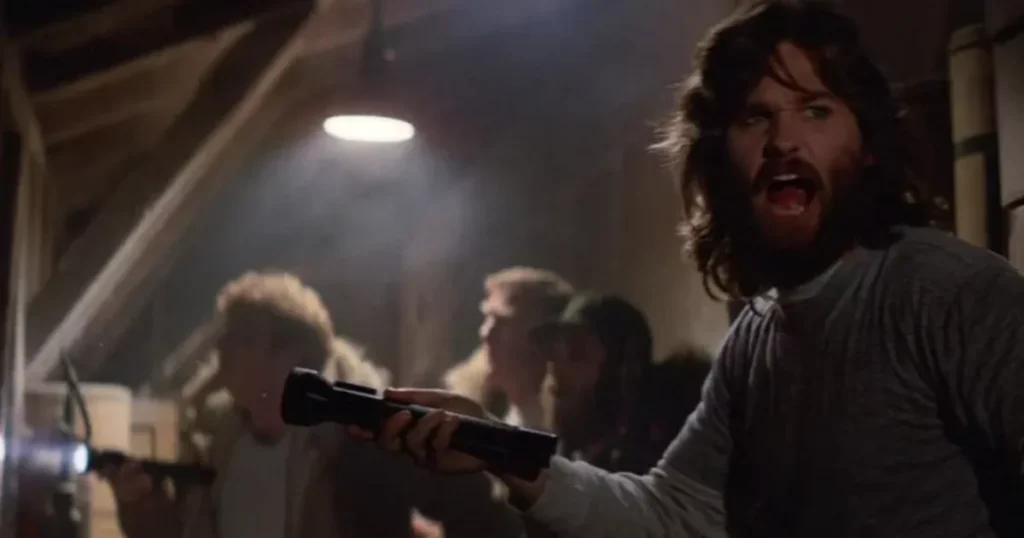
The Thing wins again, because for all the technical feats, heavy themes and symbolism in The Shining, Kubrick deliberately never lets me into the Torrance family on an emotional level. I never got the gradual descent into madness – everything is mad from the very opening! I never got to see a “normal” before things go “abnormal”. From my arbitrary set of criteria for great horror, The Thing wins by a landslide.
But I did not conceive this analysis to diminish the qualities of The Shining. Au contraire, I sought to highlight why both are benchmarks in the horror genre. At the Golden Raspberry Awards, Stanley Kubrick was nominated for “Worst Director” for the Shining, and Ennio Morricone got a Razzie nomination for scoring The Thing. Both films received harsh reviews at the time, but were always ahead of the curve. Both masterpieces are responsible for influencing generations of filmmakers and fans, leaving indelible marks that are impossible to ignore. In the end, it was Kubrick and Carpenter who won!

Chaitanya Tuteja is someone who enjoys sharing his thoughts on books, movies, and shows. Based in India, he appreciates exploring different stories and offering honest reflections. When not reflecting on his favorite media, Chaitanya enjoys discovering new ideas and embracing life’s simple moments.

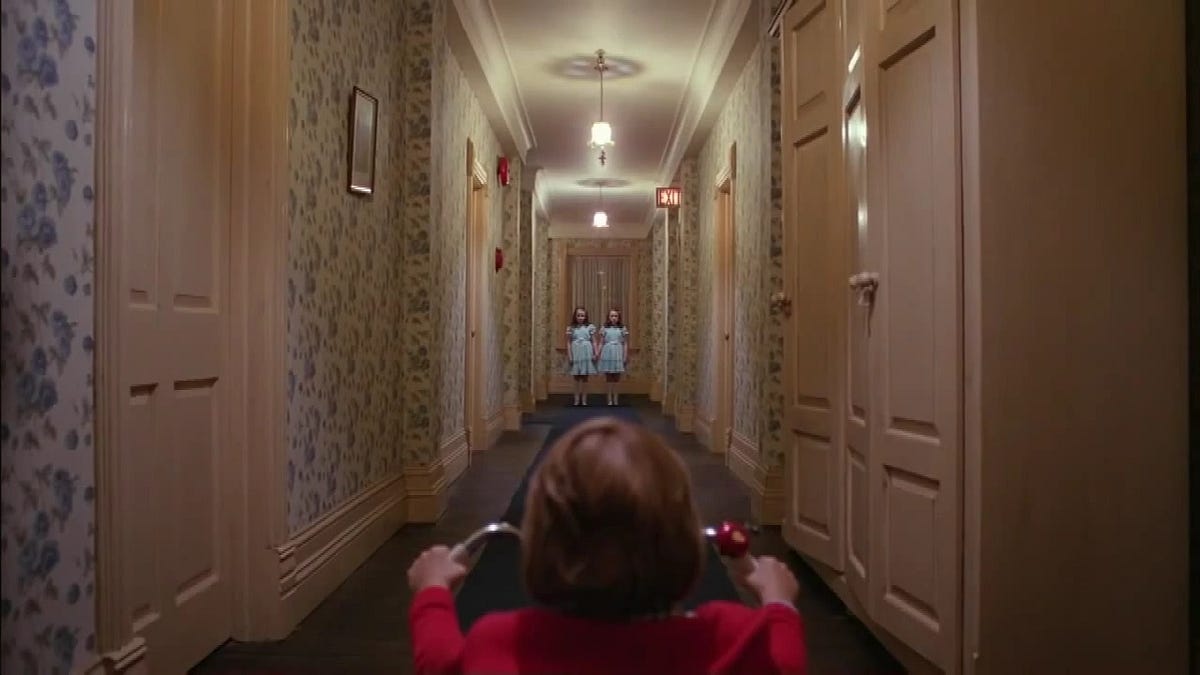
The site features various medical products for online purchase.
You can securely buy essential medicines with just a few clicks.
Our range includes popular medications and more specific prescriptions.
Each item is supplied through trusted pharmacies.
https://community.alteryx.com/t5/user/viewprofilepage/user-id/576894
Our focus is on quality and care, with secure payments and on-time dispatch.
Whether you’re looking for daily supplements, you’ll find safe products here.
Explore our selection today and experience convenient access to medicine.